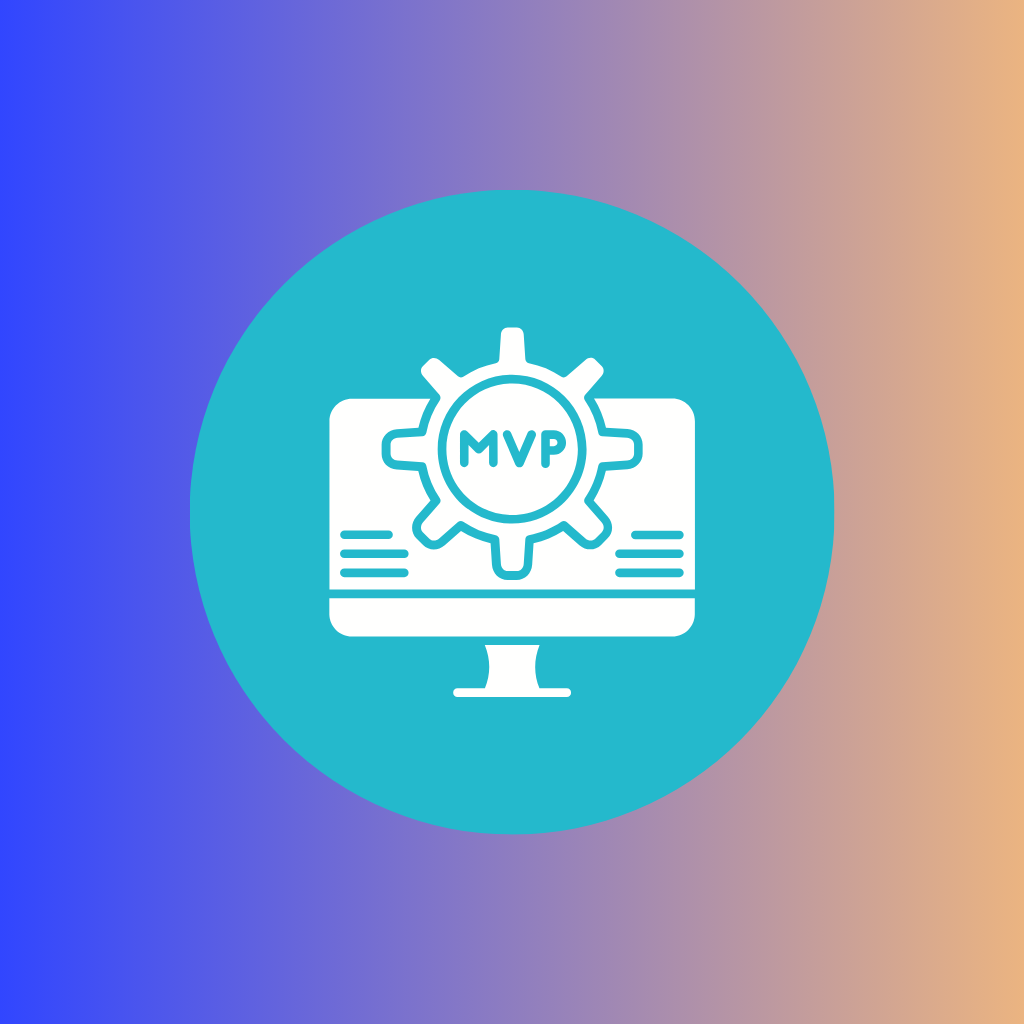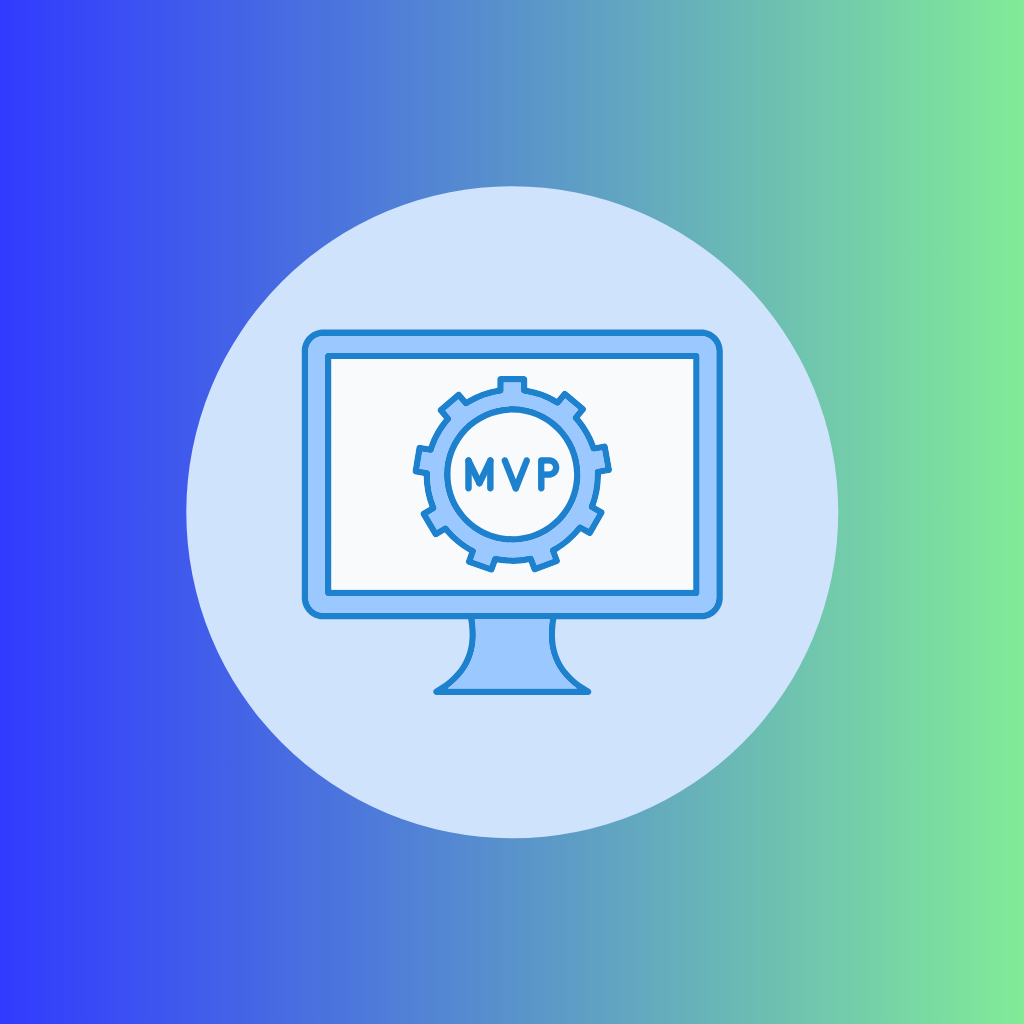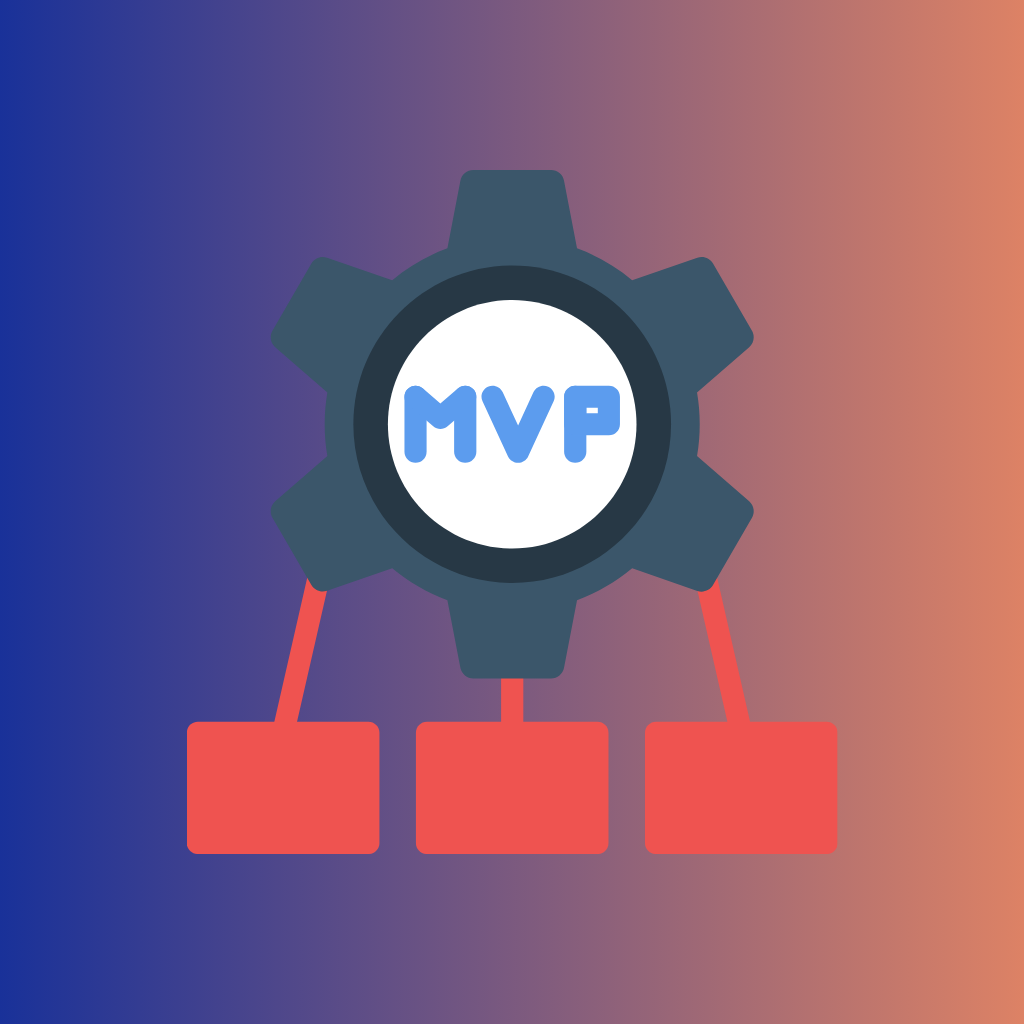In today's digital era, the importance of launching a product that truly resonates with its intended audience cannot be overstated. This is where the concept of a Minimum Viable Product, or MVP, becomes crucial. An MVP allows businesses to test, learn, and iterate their offerings with minimal risk and investment. In this blog post, we will delve into the significance of carefully scoping an MVP before diving into the development phase, ensuring that your app not only meets user needs but also stands out in a competitive landscape.
The MVP concept is a strategy used in the tech development context to introduce a new product or feature to the market with enough value to attract early adopter customers and validate a product idea early in the product development cycle. In industries where the time to market can significantly influence the overall success of a product, developing an MVP allows businesses to gather user feedback swiftly and make adjustments before any substantial resources are committed.
Understanding the scope of your MVP is a critical first step in the development process. It involves identifying the core functionalities that solve the most pressing needs of your target audience while keeping development time and costs to a minimum. This approach not only conserves resources but also provides valuable insights into the market demand for your product, enabling more informed decision-making as development progresses.
Throughout this post, we will explore the steps involved in scoping an MVP effectively, from conducting thorough market research and identifying user needs to defining your value proposition and prioritizing features. By the end, you will have a comprehensive roadmap for developing an MVP that not only meets but exceeds market expectations, setting a solid foundation for future iterations and success.
Join us as we navigate the intricacies of MVP development, armed with real-world case studies and expert insights, to ensure that your app development journey begins on the right foot. Remember, in the world of app development, starting small does not mean thinking small. An effectively scoped MVP is your first step towards creating a product that is not only viable but also valuable, desirable, and, ultimately, successful in the marketplace.
Step 1: Market Research and User Needs Identification
In the realm of app development, embarking on a journey without a map is akin to setting sail in uncharted waters. Market research and user needs identification serve as your navigational tools, ensuring you craft an app that not only addresses a genuine need but also stands out in a crowded marketplace. This step is foundational, setting the stage for a Minimum Viable Product (MVP) that resonates with your target audience and lays the groundwork for success. Let's delve into why market research is paramount, how to conduct it effectively, and how to pinpoint user needs and problems, culminating in the creation of user personas, problem statements, and a competitive summary.
Why Market Research Is Essential
Market research is your first step towards understanding the environment in which your app will live. It provides insights into your target audience's preferences, behaviors, and pain points, ensuring your app is designed with the end user in mind. This process helps in identifying gaps in the market, giving your app a clear purpose and direction. Moreover, it reduces the risk of product-market mismatch, saving you time and resources in the long run.
Conducting Market Research
To conduct thorough market research, start with secondary research by gathering existing data from industry reports, academic papers, and market analysis provided by research firms. This will give you a high-level understanding of the market dynamics and trends.
Next, dive into primary research by engaging directly with your potential users. Surveys, interviews, and focus groups are invaluable tools for gaining deep insights into your audience's needs and preferences. Tools like Google Surveys, SurveyMonkey, or even social media polls can be cost-effective ways to reach a broad audience. Remember, the goal is to understand the ‘why’ behind user behaviors, which will guide your app development.
Identifying User Needs and Problems
Armed with market research data, the next step is to distill this information into actionable insights. Look for patterns and commonalities in the data that point to specific user needs or problems that your app could solve. This stage is about empathy – putting yourself in your users' shoes to understand their challenges and desires.
Techniques like empathy mapping can be particularly useful here. An empathy map helps visualize user attitudes and behaviors, providing a deeper understanding of the target audience's experience.
Competitive Analysis
Understanding the competitive landscape is crucial. Analyze your competitors' strengths and weaknesses, and identify opportunities where your app can offer something unique or superior. Tools like SWOT analysis (Strengths, Weaknesses, Opportunities, Threats) can be instrumental in this process. Pay attention to your competitors' user reviews and feedback, as these can offer direct insights into what users appreciate and what they feel is lacking.
Outputs of This Step
By the end of this step, you should have:
- User Personas: Semi-fictional characters that represent your ideal users. Personas help keep your development focused on the needs of real people, guiding your feature choices and design decisions.
- Problem Statements: Clear articulations of the specific problems your target users are facing. These statements should be concise, based on your research findings, and directly inform the purpose of your MVP.
- Summary of Competitors: An overview of key players in your space, highlighting their strengths and weaknesses. This summary not only helps in identifying your unique value proposition but also in understanding the market standards and expectations.
Market research and user needs identification are the bedrock of any successful app development project. By rigorously following this step, you lay a strong foundation for your MVP, ensuring it is designed with purpose, precision, and a deep understanding of your target market. Remember, the goal of an MVP is to learn and iterate, and these insights are your first step towards building an app that truly meets user needs and stands the test of time.
Step 2: Defining Your Value Proposition
Crafting a clear and compelling value proposition is not just a step in the development process; it's the backbone of your app's identity. This pivotal stage is where you translate your understanding of the market and user needs into a coherent statement that outlines why your app is not just another option but the solution to your target audience's specific problems. Here, we'll guide you through the process of defining your app's value proposition, ensuring it resonates with your intended users and distinguishes you from the competition.
The Essence of a Value Proposition
A value proposition is a concise statement that highlights the unique value your app provides to its users. It answers the fundamental question, "Why should someone use your app?" It's a promise of value to be delivered, it's what captures the attention of your target audience and convinces them to take a closer look.
Aligning with User Needs and Market Gaps
The first step in crafting your value proposition is to revisit the insights gathered from your market research and user needs identification. Understanding the pain points and desires of your users allows you to position your app as a solution that is not just useful but necessary.
1. Reflect on User Personas and Problem Statements: Go back to the user personas and problem statements you've developed. These should guide you in understanding the specific needs your app addresses.
2. Analyze Market Gaps: Look at your summary of competitors and identify where the market is underserved. Your app's value proposition should clearly state how it fills these gaps in ways that competitors don't.
Crafting Your Value Proposition
1. Keep It Simple and Clear: Your value proposition should be straightforward, avoiding jargon and overcomplication. It should be understandable by anyone, not just those in your industry.
2. Focus on Benefits, Not Features: While it's tempting to list all the innovative features of your app, focus instead on how these features benefit your users. For instance, instead of saying "Our app uses AI," say "Our app makes your daily planning effortless."
3. Differentiate Yourself: Clearly state what makes your app different and better than existing solutions. This could be your app's simplicity, cost-effectiveness, innovative approach, or any other unique selling point (USP).
Outputs of This Step
By the end of this process, you should have:
- A Clear Value Proposition: A concise statement that articulates the unique value your app promises to deliver.
- Differentiators to Competitors: A list of points that clearly state how your app stands apart from existing solutions in the market.
Crafting a compelling value proposition is a critical step in the journey of app development. Remember, your value proposition is not set in stone; it can evolve as you gather more insights from your target audience and refine your app. Keep it aligned with your users' needs and market demands, and you'll have a guiding star that lights the way to success.
Step 3: Prioritizing Features for the MVP
After defining a clear value proposition, the next crucial step in scoping your Minimum Viable Product (MVP) is prioritizing features. This stage determines what essential elements your app must have to meet user needs and stand out in the market, ensuring you invest in functionalities that offer real value. Here, we'll explore methods to effectively prioritize features, ensuring your MVP is both feasible and strategically aligned with your business goals.
Listing Potential Features and Functionalities
Start with a brainstorming session involving your team to list all possible features and functionalities your app could have. Consider the insights gained from market research, user needs identification, and your value proposition. This list should be comprehensive, including everything from core functionalities to innovative features that could set your app apart.
Prioritizing Features with the MoSCoW Method
The MoSCoW method is a powerful tool for prioritizing features. It divides features into four categories:
- Must Have: Features that are essential for your app to function and meet the basic needs identified in your value proposition. Without these, your app cannot be released.
- Should Have: Important features that are not vital for launch but should be included soon after. These enhance user satisfaction and engagement.
- Could Have: Nice-to-have features that are desirable but not necessary. These are often included to increase appeal or user experience but are the first to be removed if budget or time constraints arise.
- Won't Have: Features that have been considered but explicitly decided against for the MVP. These may be revisited in future versions.
Enhancing Feature Prioritization with the Kano Model
The Kano Model complements the MoSCoW method by categorizing features based on how they affect user satisfaction:
- Basic Needs: Features users expect. Their absence leads to dissatisfaction, but their presence doesn't increase satisfaction.
- Performance Needs: Features that increase user satisfaction when performed well and lead to dissatisfaction when performed poorly.
- Excitement Needs: Features that can significantly increase satisfaction if present, but their absence doesn't cause dissatisfaction.
Using the Kano Model, prioritize features by focusing on meeting basic needs first, then integrating performance needs to enhance user satisfaction, and finally considering excitement needs to differentiate your app and exceed user expectations.
Outputs of This Step
By applying the MoSCoW method and the Kano Model, you'll end up with:
- A List of Prioritized Features for Your MVP: This list will include 'Must Have' features essential for your MVP, followed by 'Should Have', 'Could Have', and 'Won't Have' categories to guide development phases.
Prioritizing features for your MVP is a balancing act between ambition and feasibility, innovation and necessity. It requires a deep understanding of your users, a clear vision of your value proposition, and strategic thinking about your app's market position. By meticulously selecting which features to include in your MVP, you ensure that your product not only meets the minimum requirements to satisfy early adopters but also lays a solid foundation for growth and evolution in response to user feedback and market demands. Remember, the goal of the MVP is not to launch a perfect app but to start a journey of learning and adaptation that leads to success.
Conclusion
Embarking on the app development journey with a well-scoped Minimum Viable Product (MVP) is a strategic approach that positions your project for success from the outset. By understanding the critical steps involved—from conducting thorough market research and identifying user needs, to defining a compelling value proposition, and prioritizing features for your MVP—you lay a strong foundation for creating an app that resonates with your target audience and stands out in a competitive market.
The process of scoping an MVP is not just about minimizing risk and investment; it's about adopting a mindset geared towards iterative development and continuous improvement. This approach allows you to learn from real-world user feedback, adapt to changing market dynamics, and evolve your app in ways that drive sustained growth and user engagement.
As we've explored in this guide, each step in scoping an MVP is interconnected, with insights from one phase informing decisions in the next. By identifying the right user personas and problem statements, you can craft a value proposition that accurately reflects the unique benefits of your app. With this clarity, prioritizing features becomes a focused exercise in aligning your product's capabilities with your users' needs and expectations, ensuring that every element of your MVP serves a strategic purpose.
In conclusion, starting with an MVP is not just a practical route to app development; it's a philosophy that champions learning, flexibility, and user-centric design. By embracing this approach, you're not only positioning your app for a successful launch but also setting the stage for its ongoing evolution and growth. Remember, the journey of app development is a marathon, not a sprint. Starting with a well-scoped MVP allows you to pace your resources, gather invaluable insights, and incrementally build towards an app that truly makes a difference in the lives of your users.
As you move forward in your app development journey, we encourage you to embrace the principles of MVP development, leverage the tools and resources available, and remain open to learning and adapting based on user feedback. The path to creating a successful app is iterative and dynamic, and starting with a strong MVP is your first step towards navigating this journey with confidence and strategic insight.
For further learning and support, consider exploring the additional resources recommended in this guide. From books and websites to communities and services, a wealth of knowledge and expertise is available to guide you through the MVP development process and beyond. With the right approach and resources, you're well-equipped to turn your app vision into reality, delivering value to your users and achieving your business objectives.









